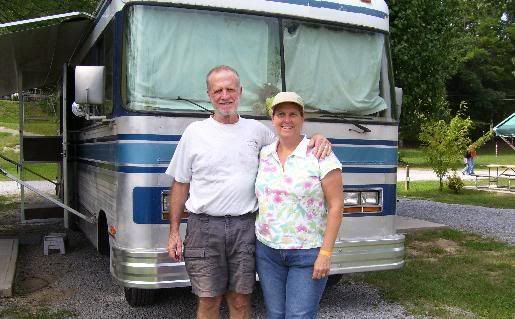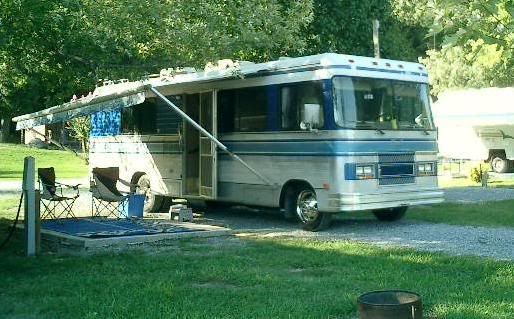Go to...  | Start A New Topic  | Search  | Notify  | Tools  | Reply To This Topic  |  |
| First Month Member |
Let me say first that I am so glad Dick and Bev are OK but sorry they lost their Barth. And, I am not trying to second-guess or critique anyone here. However, something can be learned from every bad thing that happens. When I was a Safety Guy, we Monday-morning-quarterbacked every incident with the intent of learning from it, and, perhaps preventing or learning how to deal better with a reoccurance. There are three schools of thought on this: 1. Stop, GET OUT!-----and let the insurance deal with it. 2. Stop, GET OUT! Evaluate, and do whatever (if anything) you think you can do. 3. Evaluate, and do what you can while one drives to a halt and the other fights the fire. The key word here is evaluate. Before I pen the Great American Novel here, I will start the ball rolling by saying, "Never open a doghouse if you suspect a fire." I heard a whump and saw a man in flames leap into the water when he opened an engine hatch checking on a fire. He landed in the water before the hatch did. (And it was held on with Perko hinges.) Fortunately, he wore glasses, which protected his eyes, and his burns were not serious. Opening a doghouse allows the fire to really burn faster and hotter. So, let's share what we know and think on this important subject. . 84 30T PeeThirty-Something, 502 powered | ||
|
As most of you know, our RV had security bars on the windows. Never thought much about it until the fire. Had it been necessary for me to exit one of the rear windows, I would have had to take the time to remove the bars before opening the window. Please make sure that none of your exit windows are obstructed. A minute or two in a coach filled with smoke could make the difference between living and dying. What would have happened if I had to put my grandchildren or dogs out on the traffic side of the interstate. Take the time to discuss this with all who are traveling and/or camping with you every time you head for the road. | ||||
|
 6/12 6/12Formally known as "Humbojb" 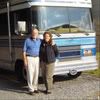 |
It seems obvious that one must inspect all fuel lines. I must confess that the only one I ever messed with is the solid line that attaches directly to the Q-Jet. Can someone tell me where the rubber fuel lines are located on an 85 28' Regal on a P32 chasis? Also, is there an option to replacing worn out rubber fuel lines with something that won't be a hazard?. And additionally, should we stay away from ethenol? Someone inferred that it ate up rubber fuel lines.
| ||||||||||||
|
"is there an option to replacingworn out rubber fuel lines with something that won't be a hazard?. And additionally, should we stay away from ethenol?" The operative phrase is "worn out". Metal or braid lines that are "worn out" -and some are after 20-30 yrs- will be hazardous. Neoprene lines are safe, cheap, easy to work with; just check them occasionally. The key is inspection, as several of our resident -bona fide- experts continue to preach. Good luck with avoiding your-elected-representatives'-boondoggle known as ethanol. (Wonder how long before drivers start blaming the corn farmers instead of the oil bidness?) "You are what you drive" - Clint Eastwood | ||||
|
Captain Doom |
Neoprene fuel lines should also be double-clamped. Rusty '94 28' Breakaway: MilSpec AMG 6.5L TD 230HP Nelson and Chester, not-spoiled Golden Retrievers Sometimes I think we're alone in the universe, and sometimes I think we're not. In either case the idea is quite staggering. - Arthur C. Clarke It was a woman who drove me to drink, and I've been searching thirty years to find her and thank her - W. C. Fields | |||
|
| First Month Member |
Particularly if you use worm clamps. The worm screws should be at least 90 degrees from each other. This is a reflection of the out-of roundness of small worm clamps. My V12 Jag has been a rolling laboratory in fuel leaks, owing to the number of injectors, the high underhood temperatures and the poor air flow while in El Lay traffic. I found the worm clamps to be very poor in small diameters, such as fuel lines. Staggering the screws helped. I also had good results by making sure the clamps were perfectly round. Tighten one up without a hose and look at it. It is not round, at all. Then tighten it up around a rod or bolt of similar diameter to the hose. Tap it with a little hammer all around its circumfrence. Or squeeze in all the right places with pliers until it is round. Now unscrew it and tighten it up to where it was. You will see it is much more round. Sounds like silliness or overkill, but engine fires are no fun. Fuel injection clamps are usually more likely to seal well, as they form a truer circle, but be selective and buy the correct size. I do the same tapping thing with the FI clamps, just to be extra safe. I have had the best luck with FI clamps sold by my BMW motorcycle dealer. I have to be sure that he is selling me the real German thing, though, not some Chinese junk. He is greedy, and tries to sell Chinese parts at German prices. I like Weatherhead H077 fuel injection line with a burst strength of 900 psi. I still sniff-check the Jag often, but it has stayed pretty leak free. In a pinch, I will use Goodyear fuel injection hose from Kragen (or is it Autozone?). It is also lined with Fluorel and has a Hypalon jacket. . 84 30T PeeThirty-Something, 502 powered | |||
|
| The Old Man and No Barth |
Jim & Tere: As I recall, the line from the fuel pump to the carb. was all metal on my 454. The neoprene lines were all between the tank & the fuel pump. That doesn't mean yours will be the same - I once had an ancient Dodge van for which I could not find a replacement for the convoluted metal line between the pump & the carb. I had no recourse but to replace it with neoprene, carefully routing it away from excessive heat & sharp edges, & fastening it wherever I could along the way. The only way you're going to know for sure is get out & get under, & look for yourself. With an '85, there's a good chance you'll find some that need to be replaced. | |||
|
Captain Doom |
Most GM engines use steel from the fuel pump to the carb. I once had to replace the fuel pump on the road (106°F), and even though I used a back wrench on the fitting, I let it move slightly, and the fuel line twisted and split. That's when I replaced it with FI line (rated at 50 psi) even though the fuel pump only puts out about 6 psi. The one reason I like the neoprene is that one can tell what condition it's in... Rusty '94 28' Breakaway: MilSpec AMG 6.5L TD 230HP Nelson and Chester, not-spoiled Golden Retrievers Sometimes I think we're alone in the universe, and sometimes I think we're not. In either case the idea is quite staggering. - Arthur C. Clarke It was a woman who drove me to drink, and I've been searching thirty years to find her and thank her - W. C. Fields | |||
|
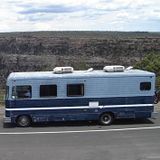 |
Interesting series of posts. For mine, since I was planning on putting in larger Hehr windows anyway, 2 of the 4 I am putting in will be the "egress" type. That earlier serious of posts about the RV crash got me very attuned to this. Fire extinguishers: how many, what type, and where do you have them placed? Halon systems: does anyone have one installed in the engine or generator compartments? From what my limited experience tells me, fire detectors work by the presence of ionized particles given off by fire. Would such a thing be of use under the 454 cover? thanks, Matt 1987 Barth 27' P32 Chassis Former State Police Command Post Chevrolet 454 Weiand Manifold, Crane Cam, Gibson Exhaust | |||
|
| First Month Member |
That is also what I recall on mine, at least before I put in an engine with no fuel pump. I still use the steel line from the area previously know as fuel pump area to the carb. There is definitely a flex line where the steel line terminates at the right front corner. Later today, I will go across the street and look at my previous SOB, which is unmodified. ON EDIT: It has a rubber line going from the underside of the pump to the frame steel line. There is also another, smaller rubber line, which I presume is a vent or vapor return. On light aircraft, it is standard practice to use fire sleeve to enclose hoses subject to high heat. It not only protects the fuel line from fire, but from the ravages of heat. You can also use several layers of foil, Thermo Tec tubing, header wrap or flexible conduit. There are also vapor return and who knows what the name lines going to the charcoal canister to the right of the engine. They need attention, too. Put a filter in the line from the carb to the canister. I had a stuck float flood the carb, which I deaalt with in my usual quick and dirty on the road fashion. As continued the trip, congratulating myself, things got worse again. I turned out that the carb flooding extended up the hose into the canister, and caused carbon granules to float from the canister into the carb, which made my roadside Qjet repair way too involved. A small filter prevents that now. In addition to the citation of my Jag V12 as a rolling laboratory in fuel leaks, I just recalled early VW hatchbacks with FI catching fire a lot. I remember beatles had just slip-on fuel lines. Always scared me. . 84 30T PeeThirty-Something, 502 powered | |||
|
| First Month Member |
Ours has all big windows with the red egress handles. We are glad. BTW, does anyone know if the new Peninsula double glazed windows are available with them?
As you enter my side entrance, on your left is a Kidde foam extinguisher. Pretty big one. On your right, between the tub chair and the wall is a 2 1/2 gallon water ext filled with Cold Fire fluid. My exposure to that product at races has convinced me of its effectiveness. Both of these are accessible by us after we have run outside and evaluated the situation. My fight or flight instinct has mellowed out to flight, evaluate, then fight, if wise. We also have a couple of smaller cold fire extinguishers in the bedroom and one in the kitchen. I am considering finding another big foam ext for the bedroom, in case I have to fight our way past a burning kitchen fire instead of going out the bedroom window. They are hard to find, though. I have purchased, but not yet installed a powerful washdown pump that puts out 5 gpm at 70 psi. It will have its own dedicated hose, which will be accessible from outside. The coily hose will be stashed underneath so I can grab it without unlocking a compartment. Haven't worked it out yet, though. 40 gallons of water at 70 psi could be very effective. There is a hose-end AFFF jug I will hunt down and buy, too. Or use Cold Fire. While we are on extinguishers, if you do have dry chemical extinguisher, be sure the powder is loose inside. It tends to settle pretty hard with road vibration. Hit the bottom with a rubber hammer. If it doesn't loosen up (and some won't)get rid of it. A dry chemical with set up powder just goes phhhttt at your fire, with little result. This is the dirty little secret of dry chemical extinguishers. The whole world has inspection programs in which someone checks pressure and signs for it. But nobody that I am aware of does a shake test. That includes airlines, the Navy, GSA, Salvation Army, etc. The toad also has a big fire bottle in the passenger foot area, and we travel unlocked for quick access. The hitch is not locked, but secured with a pip pin in case we have to move the toad away from a burning RV. Or push the burning RV away from a fire-susceptible area or into a lake or something.
Halon is heavier than air, so will fall down away from an engine fire. Would work a little better in a genset compartment, depending on the venting. I use a Halon system in my boat.
I doubt it. On our airliners, we used optical particle detectors in cargo and passenger compartments, but overheat detectors in engine compartments. Different areas of the nacelles even had different alarm settings, in concert with the normal operating temperatures for those areas. A temp detector is also useful for detecting an exhaust leak, which would cause elevated temperatures. I use an oven remote alarm thermometer to monitor engine compartment temperature. If we used our generator, I would run a sensor back there, too. When we are parked, the remote sensor gets stuck in the fridge compartment, but Susan often demands that I return it to the kitchen. Continuing on doghouses, I have previously mentioned not to throw open the doghouse if a fire is suspected. My present engine fire plan is to turn the helm over to Susan and crack the doghouse open just far enough to stick the hose from the extinguisher in it. As soon as we are stopped, we will run outside and I will fight the fire from either underneath or inside, depending on whatever. Piston airliners used to have metal spring-loaded trap doors on their nacelles. The nozzle of an extinguisher could be forced into them to put out a fire without opening things up and giving the fire more oxygen or exposing the putter-outer to flames and burning Skydrol fumes or whatever. I plan on making such a trap door when I redo my doghouse cover when I put on the Performer intake manifold when I leave California smog inspections. Does anyone know of a little trap door that would do the job and save me the task of making one? Do I get the word-count award today? . 84 30T PeeThirty-Something, 502 powered | |||
|
Captain Doom |
You ought to be able to snag a fuel-fill door from a junkyard - most are spring loaded. Rusty '94 28' Breakaway: MilSpec AMG 6.5L TD 230HP Nelson and Chester, not-spoiled Golden Retrievers Sometimes I think we're alone in the universe, and sometimes I think we're not. In either case the idea is quite staggering. - Arthur C. Clarke It was a woman who drove me to drink, and I've been searching thirty years to find her and thank her - W. C. Fields | |||
|
 3/11 3/11 |
Addressing the earlier question first: The most susceptible line for rot and damage is the connection from the steel line between the fuel tank where it terminates in the right front wheel well area. This short suction line must be flexible to cope with the engine vibration. It connects the steel line to the suction side of the mechanical fuel pump. IF you have, or someone else has, added an in-line electric pump between the tank and the mechanical pump inlet they have converted a suction line to a pressure line, and GM did not intend that to be done. Thus a weakness has been introduced. You should replace the short section with a braided high pressure protected fuel line and use the band type clamps. These are available from hot rod and race shops or places like JEGS and Summit Racing. While stainless steel jacketed lines are more expensive they work particularly well in heat and vibration areas. While we probably won't know what caused the fire the Q Jet inlet has aluminum threads and is very weak. To counter that some mechanics use teflon or pipe dope and that should never be used - either will degrade quickly in the presence of fuel. Because the fire started while the engine was running it is likely the outlet pressure connection from the mechanical pump was squirting fuel onto the exhaust manifold and it ignited and as long as the engine continued to run the pump was delivering fuel to the fire. 1993 32' Regency Wide Body, 4 speed Allison Trans, Front Entry door, Diamond Plate aluminum roof & 1981 Euro 22' w Chevy 350 engine and TH 400 tranny | |||
|
"Host" of Barthmobile.com 1/19 1/19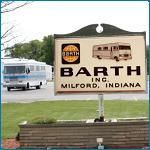 |
Mary Ray sent me this link. RV catches fire and burns the house down too. http://www.wbir.com/video/player.aspx?aid=61357&sid=55922&bw=
| |||||||||||||||
| ||||||||||||||||
 6/12 6/12Formally known as "Humbojb"  |
Tom K, didn't know that the Ford 460 had a q-jet? So you're saying that between the steel line coming from the q-jet in my 85 Regal, and the steel line coming from the fuel tanks, there is some kind of rubber/fabric line?
| ||||||||||||
|
| Powered by Social Strata | Page 1 2 3 |
| Please Wait. Your request is being processed... |
|
This website is dedicated to the Barth Custom Coach, their owners and those who admire this American made, quality crafted, motor coach.
We are committed to the history, preservation and restoration of the Barth Custom Coach.
We are committed to the history, preservation and restoration of the Barth Custom Coach.
